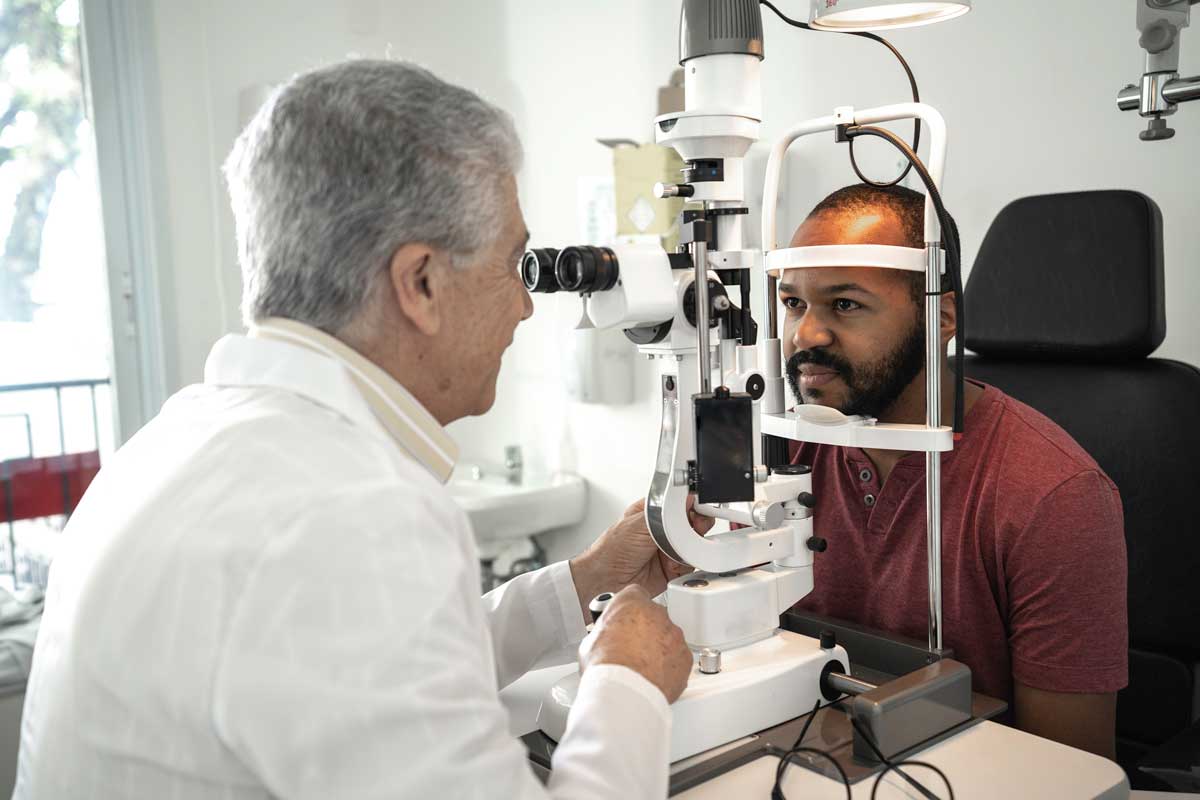 |
| Black and Hispanic glaucoma patients are less likely to receive eye exams and imaging tests, and have higher counts of emergency care and laser procedures. Photo: Getty Images. |
In the United States, glaucoma prevalence is higher among Black and Hispanic patients compared to white patients and yet these groups are less likely to receive preventive and ongoing care. Researchers aimed to evaluate racial disparities in vision outcomes and eye care utilization among glaucoma patients in a new study using data from the Academy of Ophthalmology’s IRIS Registry. They found that glaucoma is undertreated in these racial minority groups, with Blacks and Hispanics less likely to receive eye exams and imaging tests, and having higher counts of emergency care and laser procedures.
IRIS data on nearly one million patients was evaluated— 996,297, to be precise—of which 73% were white, 15% Black, 9% Hispanic, 3% Asian/Pacific Islander and 0.3% Native American/Alaska Native. Patients with a minimum of one diagnosis code for glaucoma and at least one eye exam, visual field, OCT or eye-related inpatient or emergency department (ED) code were analyzed.
Black and Hispanic patients had higher likelihoods of cup-to-disc progression (odds ratio [OR] 1.12 and 1.238, respectively) poor vision (OR 1.26 for each), glaucoma filtering surgery (rate ratio 1.47 and 1.13, respectively). These groups also had lower rates of age and glaucoma-severity adjusted counts of outpatient ophthalmology visits and glaucoma testing and higher counts of emergency care and laser/surgery procedures. “Our results also demonstrate a significant disparity in care for Native American patients who were more likely to have poor vision and had substantially lower utilization of almost all eye care services, indicating that glaucoma may be undertreated in this population,” the researchers wrote in their paper for American Journal of Ophthalmology.
One contributing factor is likely discrepancies in the usage of eyecare services. The authors found the racial minorities were less likely to receive outpatient eye exam visits and glaucoma testing with OCTs. “These results suggest that Black, Hispanic and Native American patients less frequently receive preventative care services, such as eye exams and imaging tests. Further, we found higher rates of inpatient/ED encounters and glaucoma filtering surgery among Black and Hispanic patients.”
Findings from this study align with what has been found in recent studies on glaucoma care. A Medicare analysis of 78,526 beneficiaries found that Black patients had lower counts of outpatient visits, visual fields and OCTs, and higher counts of inpatient and ED encounters.
“Additionally, a report on 5,815 glaucoma patients in the Medical Expenditure Panel Survey from 2002 to 2017 found that non-Hispanic Black patients were less likely to see an ophthalmologist for a glaucoma-related eye exam compared to their White counterparts after adjusting for socioeconomic factors,” the authors noted. “In both studies, Hispanic patients had lower counts of outpatient visits and OCTs and higher counts of inpatient/ED encounters, but these differences disappeared after adjusting for SES.”
There are other reasons for the discrepancies between white and racial and ethnic minority patients. Black patients have been found to have reduced medication adherence, which may contribute to glaucoma progression and poor vision outcomes. “Lower adherence to medication regimens and follow-up appointments may be due, in part, to lower trust in the healthcare system among racial and ethnic minorities as mentioned above,” the authors explained. It is also likely that cost-related medication and visit nonadherence impacts these racial and ethnic minority groups as well.
Ciociola EC, Sekimitsu S, Smith S, et al. Racial disparities in glaucoma vision outcomes and eye care utilization: an IRIS registry analysis. Amer J Ophthalmol. March 21, 2024. [Epub ahead of print.] |


